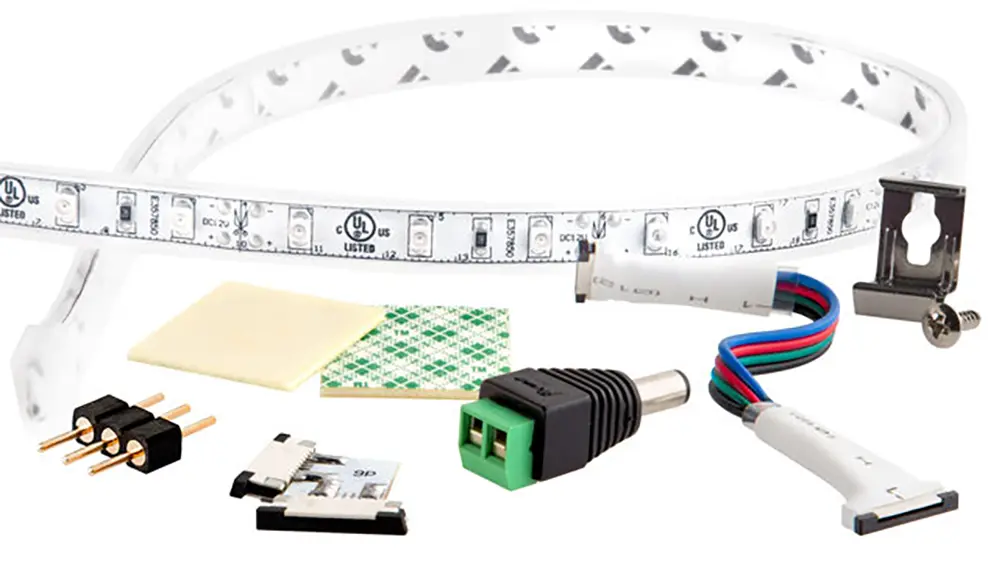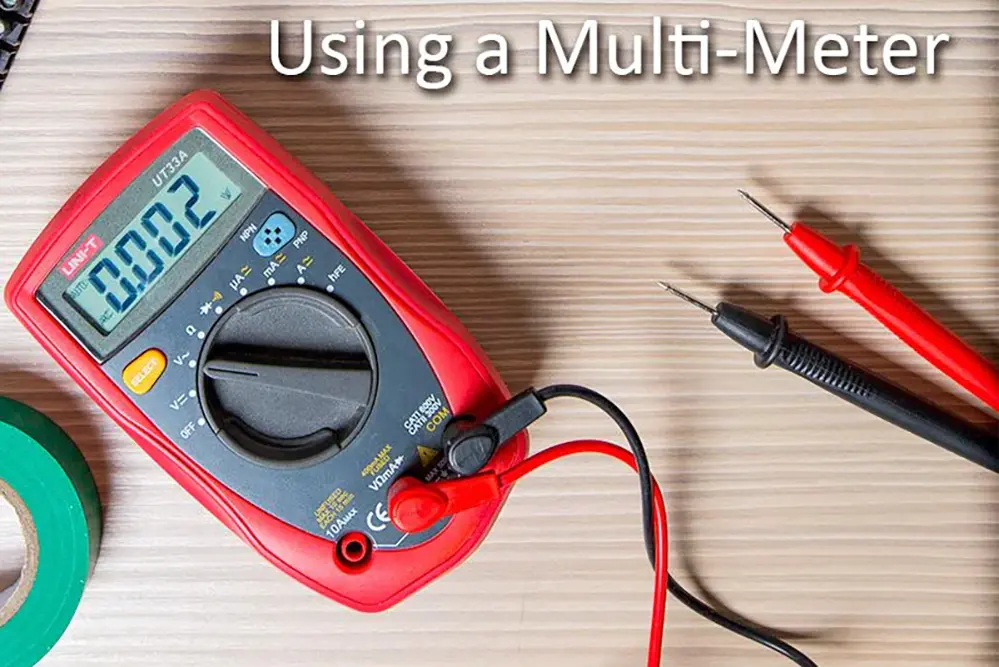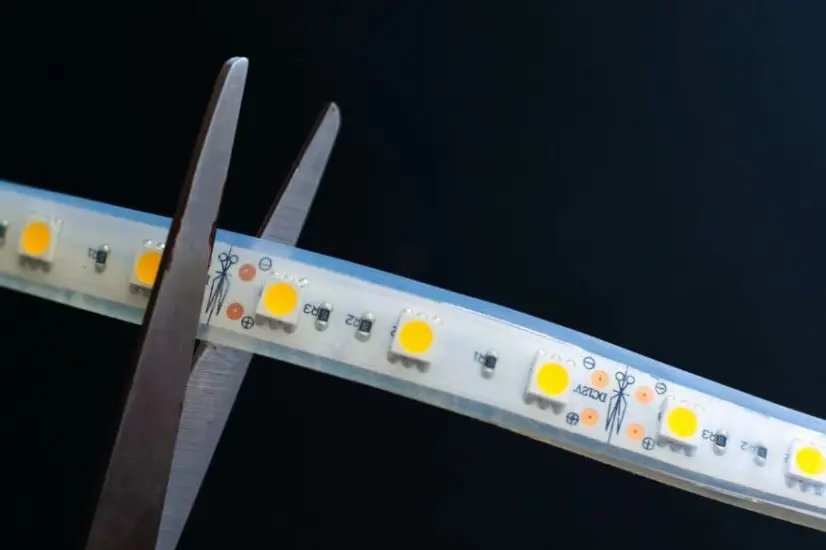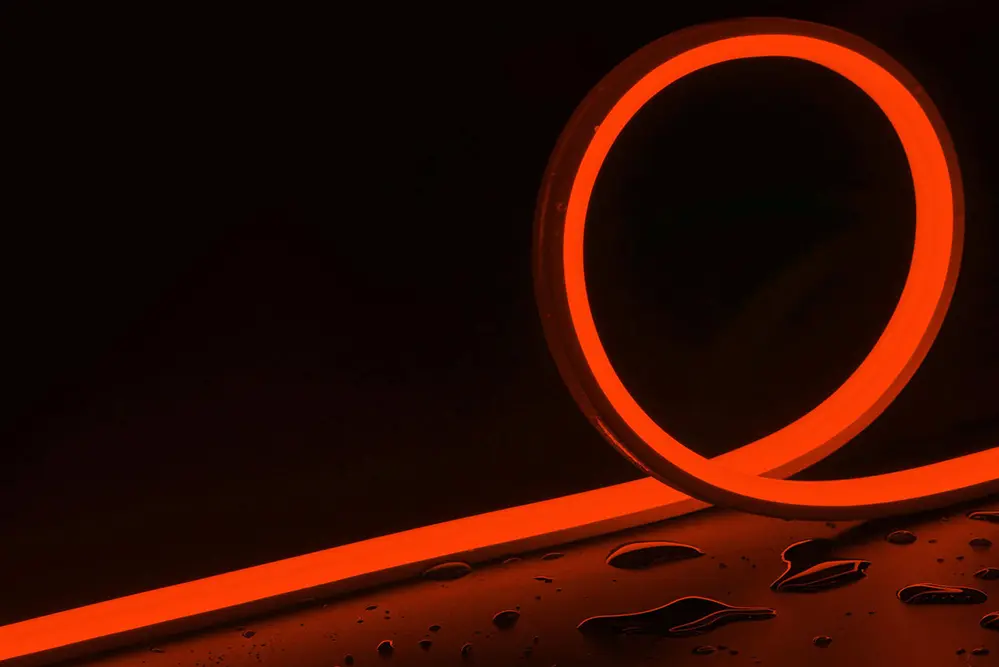Experiencing a burning smell from your LED strip lights can be disconcerting, but don’t worry. We’ve got you covered. With our deep understanding and expertise in LED technology, we’re here to guide you through identifying the causes and implementing effective solutions. Trust us to transform your concerns into confidence with actionable insights to ensure a safe and well-lit environment.
LED strip lights emitting a burning smell normally indicate overheating, use of substandard materials, or electrical wiring issues. Promptly identifying and addressing these causes is crucial for ensuring the safety and proper functioning of your lighting.
Please continue reading to delve into the various factors contributing to this burning smell and uncover practical strategies for resolving them. Our guide offers detailed insights to enhance the durability and safety of your LED lighting.
Decoding the Burning Smell: Common Causes in LED Strip Lights
Understanding why your LED strip lights are giving off a burning smell is crucial in mitigating risks and ensuring safety. This discomforting odor can be attributed to several factors:
Overheating: One of the most common culprits is overheating. LED strips are designed to operate within a specific temperature range, and exceeding this can cause damage to the internal components. The overheating often results from overburdened circuits or lack of proper ventilation. In scenarios where LED strips are encased or covered, heat accumulation exacerbates, triggering that distinctive burning smell.
Low-Quality Components: The quality of materials used in LED strips plays a pivotal role. Inferior quality components, especially in cheaper alternatives, are more susceptible to heat damage and electrical faults. These substandard materials not only reduce the lifespan of the LED strips but also pose safety risks.
Incorrect Installation: Improper installation is another key factor. This includes using a different type of power supply, faulty wiring, or even tightly coiling the LED strips, which hinders heat dissipation. Each of these scenarios can lead to excessive heat build-up.
Electrical Faults: Lastly, electrical issues such as faulty wiring, loose connections, or incompatible power supplies can lead to overheating. These faults might produce a burning smell and pose a fire hazard.
Expanding on Overheating Prevention in LED Strip Lights
Preventing overheating in LED strip lights is essential for both their performance and safety. Overheating can lead to not only a shortened lifespan but also potentially dangerous situations. Here’s an in-depth exploration of effective strategies to avoid overheating:
Detailed Installation Guidelines
Space for Air Circulation: When installing LED strip lights, ensure there’s enough space around them for air to circulate. This is particularly important in confined spaces such as under cabinets or in recessed areas. Good air circulation helps in dissipating heat effectively.
Avoid Coiling: Coiling LED strips can create heat pockets, leading to overheating. Ensure that the strips are laid out flat and straight during installation. If bending is necessary, do it gently and avoid sharp bends to prevent damage to the strips.
Selecting the Appropriate Power Supply
Matching Voltage and Current: The power supply for your LED strips must match both the voltage and the current specifications. Using a power supply with a current rating that is too high can lead to overdriving the LEDs, which generates excessive heat.
Understanding Specifications:Read the specifications of your LED strips carefully.
Pay attention to the recommended power supply ratings and ensure your chosen power supply aligns with these.
If in doubt, consult with a professional or the manufacturer for guidance.
Implementing Adequate Ventilation Solutions
Assessing the Environment: The installation environment plays a significant role in heat management. In areas with limited airflow, consider additional cooling solutions to prevent overheating.
Using Heat Sinks: In enclosed spaces, heat sinks can be an effective way to dissipate heat. They absorb and disperse the heat generated by the LEDs, helping to maintain a safe operating temperature.
Incorporating Fans: In very confined spaces, small fans can be used to improve air circulation. This is particularly useful in situations where natural airflow is insufficient to cool down the LED strips.
Enhancing Quality Considerations for LED Strip Lights
Quality is the cornerstone of LED strip lights, directly impacting their longevity, performance, and safety. Understanding how to discern high-quality LED strips is crucial for any buyer, whether for residential or commercial use. Here’s a deeper dive into the aspects you should consider:
Understanding Certifications
Why Certifications Matter: Certifications like CE (Conformité Européenne) and UL (Underwriters Laboratories) are not merely decorative labels. They are indications that the product adheres to specific safety and performance standards set by recognized bodies.
Compliance with Standards: When an LED strip light is certified, it means it has undergone rigorous testing and meets the required standards for safety, efficiency, and durability. These standards often cover aspects like electrical safety, electromagnetic compatibility, and environmental impact.
Global and Regional Standards: Depending on your region, certain certifications may be more prevalent. For instance, CE is widely recognized in Europe, while UL is expected in the United States. Familiarize yourself with the certifications relevant to your area to make an informed choice.
Selecting Reputable Brands
Brand Reputation: Opting for a well-known brand is more than just a choice for popularity. Reputable brands have a history of reliability and consistent quality and often have more at stake in terms of maintaining their market reputation.
Research and Development: Established manufacturers typically invest more in research and development. This leads to innovations in LED technology, offering you products that are not only efficient but also incorporate the latest advancements.
Customer Support and Service: A reputable brand usually provides better customer support, which can be invaluable in addressing issues, offering installation guidance, and providing post-purchase services.
Importance of a Strong Warranty
Warranty as a Quality Indicator: A product warranty is a commitment from the manufacturer to the buyer, indicating the confidence they have in their product. More extended warranty periods often correlate with higher product quality and durability.
Reading the Fine Print: Understand the terms of the warranty. What does it cover? Are there any conditions or exclusions? A comprehensive warranty covering a wide range of potential issues can be a significant indicator of quality.
Ease of Warranty Claims: Consider how easy it is to claim the warranty. A straightforward warranty process without cumbersome requirements reflects a customer-centric approach from the manufacturer.
Deepening Electrical Safety with LED Strip Lights
Ensuring electrical safety with LED strip lights is crucial, not only for the longevity of the lights but also for the safety of your home or workplace. Here’s an expanded look at the steps you can take to ensure electrical safety:
Conducting Regular Inspections
Routine Safety Checks: Make it a habit to inspect your LED strip lights periodically. This routine should include checking for any visible damage, such as cracks, frayed wires, or signs of overheating like discoloration or melting.
Attention to Connection Points: Pay special attention to connection points, often the first places to show signs of wear. Loose connections can lead to sparks or short circuits, both of which are potential fire hazards.
Signs of Trouble: Be vigilant for any signs that indicate trouble, such as flickering lights, unusual sounds like buzzing or crackling, or a burning smell. These symptoms can signal a deeper electrical issue that needs immediate attention.
Compatibility of Accessories
Choosing the Right Accessories: The type of accessories you use with your LED strip lights, including connectors, controllers, and power supplies, should be compatible with the specific type of LED strip you have.
Risks of Incompatible Accessories: Using incompatible accessories can lead to a range of problems, from reduced efficiency and brightness to more serious issues like electrical shorts.
Understanding Specifications: It’s important to understand the specifications of both your LED strip lights and the accessories. This includes voltage requirements, wattage limits, and compatibility with dimmers or controllers.
Seeking Professional Help for Installation
When to Call a Professional: If you’re unsure about any aspect of installing LED strip lights, particularly in complex setups or where electrical modifications are needed, it’s best to consult a professional electrician.
Benefits of Professional Installation: A professional can ensure that your LED strip lights are installed according to safety standards, with the correct wiring and insulation. They can also help with optimizing the layout for the best lighting effect while ensuring safety.
Advanced Installations: For installations that involve integrating LED strip lights into home automation systems or setups that require extensive electrical modifications, professional expertise is not just recommended. It’s essential.
Detailed DIY Diagnostics for LED Strip Light Odors
Detecting a burning smell from your LED strip lights can be alarming. However, with some basic DIY diagnostic steps, you can identify and resolve the issue before it escalates. Here’s an expanded guide on how to go about it:
Securing Connections
Checking Connection Points: Begin by examining each connection point along your LED strip. Loose or improper connections are often the culprits behind overheating issues.
Proper Fitting of Connectors: Ensure that all connectors are properly fitted. A connector that’s not fully engaged can cause partial contact, leading to arcing and overheating.
Addressing Loose Wiring: If you find any loose wiring, secure it firmly. Loose wires can lead to electrical shorts, which not only produce a burning smell but can also pose a fire hazard.
Damage Inspection
Visual Inspection of the Strip: Conduct a thorough visual inspection of the entire length of your LED strip. Look for any physical signs of damage, such as cuts, breaks, or blackened areas.
Identifying Burn Marks: Pay special attention to any signs of burning or melting on the strip. These are clear indicators of overheating and can pinpoint the exact location of the problem.
Checking for Exposed Wiring: Inspect the strip for any exposed wiring or components, as these can also lead to short circuits and overheating.
Voltage Testing
Using a Multimeter: Employ a multimeter to test the voltage at different points along the LED strip. This will help you determine if the supplied voltage is consistent with the strip’s requirements.
Identifying Voltage Anomalies: If you discover any anomalies in the voltage, such as spikes or drops, this could be the reason behind the overheating. Voltage issues can stem from a faulty power supply or incorrect installation.
Ensuring Consistent Voltage Supply: The entire length of the LED strip must receive a consistent voltage. Variations can lead to certain sections drawing more power than they are designed for, leading to overheating.
Understanding LED Light Lifespan and Burnout
The longevity and reliability of LED strip lights are among their most significant advantages, but like any electronic device, they are not immune to wear and tear. Understanding what affects their lifespan and leads to potential burnout is key to preventing that concerning burning smell.
Voltage Fluctuations: One of the primary reasons for LED failure is voltage fluctuations. These can occur due to unstable power supplies or surges in your electrical system. When the voltage exceeds or drops below the LED’s required level, it stresses the internal components, leading to potential damage. This can manifest as a reduced lifespan or even immediate failure of the LED strips.
Wrong Dimmer Switches: Using the wrong type of dimmer switch is a common mistake that can adversely affect LED strip lights. LED strips require specific types of dimmers to function correctly. Incompatible dimmers can lead to flickering, which is not just irritating but also a sign of electrical stress on the LED. Over time, this can reduce the lifespan of the LED and potentially lead to that burning smell.
Environmental Factors: The environment in which LED strips are used plays a significant role in their longevity. Extremes of temperature, whether too hot or too cold, can negatively affect LED performance. Moisture and humidity are also detrimental. For instance, an LED strip installed in a humid or outdoor environment without proper protection might experience accelerated wear.
Frequently Asked Questions About LED Strip Lights
Q: Can LED strip lights catch fire?
A: LED strip lights have a shallow fire risk, especially compared to traditional lighting. However, poor installation, low-quality materials, or incorrect power supply can increase the risk. It’s important to follow safety guidelines and use high-quality products.
Q: What should I do if I notice a burning smell from my LED strip lights?
A: If you detect a burning smell, immediately turn off the power to the strip lights and inspect for signs of overheating or damage. Check for loose connections, improper installation, or faulty components. If the problem persists, consult a professional.
Q: Why do my LED lights smell like they’re burning?
A: A burning smell from LED lights often indicates overheating or the use of poor-quality materials. Overheating can occur due to excessive current, inadequate ventilation, or improper installation.
Q: Are there specific environmental conditions that affect LED strip lights?
A: Yes, extreme temperatures, moisture, and dust can adversely affect LED strip lights. These conditions can lead to premature degradation, impacting both performance and lifespan.
Q: How can I prevent my LED strip lights from overheating?
A: To prevent overheating, ensure proper installation with adequate space for heat dissipation. Use a power supply that matches the strip’s requirements and avoid enclosing LED strips in tight, unventilated spaces.
Q: What is the average lifespan of LED strip lights?
A: The average lifespan of LED strip lights ranges from 25,000 to 50,000 hours, depending on usage and quality. Factors like overheating and voltage fluctuations can significantly reduce this.
Q: How do I know if my LED strip lights are of good quality?
A: Look for certifications like CE or UL, check for warranties, and opt for reputable brands. High-quality LED strips will also have consistent brightness and color and be free from manufacturing defects.
Q: Can I repair burnt-out sections of LED strip lights?
A: In some cases, burnt-out sections can be repaired by re-soldering or replacing the faulty segment. However, if the damage is extensive, it might be more practical to replace the entire strip.
Q: What causes LED light strips to flicker?
A: Flickering in LED strips can be caused by voltage fluctuations, incompatible dimmer switches, or loose connections. Ensure that your power supply and dimmers are compatible with the LED strip’s specifications.
Q: Is it safe to leave LED strip lights on all the time?
A: While LED lights are more energy-efficient and have a lower heat output, it’s advisable not to leave them on continuously for extended periods. This can help extend their lifespan and reduce the risk of any potential electrical issues.
Conclusion: Ensuring Long-Term Safety and Efficiency of LED Strip Lights
In conclusion, addressing the causes of a burning smell in your LED strip lights is not only about troubleshooting a minor inconvenience but also about ensuring the safety and longevity of your lighting solutions. Quality, proper installation, and regular maintenance are essential.
When it comes to quality, Unitop, one of China’s leading manufacturers of LED strip lights and LED neon flex, stands out in the industry. With a commitment to excellence and innovation, Unitop offers reliable, high-quality lighting solutions. Whether you have further questions or specific requirements or need expert guidance, Unitop is your go-to source. Contact us today to illuminate your space with confidence and peace of mind, knowing you’re in the hands of industry leaders. With Unitop, you’re not just choosing superior lighting solutions; you’re choosing a brighter, safer future.
Related Posts

Tom is now the Sales Manager of Unitop (China) Co., Limited. He has been in the LED Lighting industry ever since 2005. He is an expert in sales & marketing, and factory management. He likes bodybuilding, and he is also a crazy Apple Fan! He is a hard-working guy and loves to learn and try new things.
Email: tom@unitopledstrip.com WhatsApp: +86-18680307140








Leave a Reply
Want to join the discussion?Feel free to contribute!